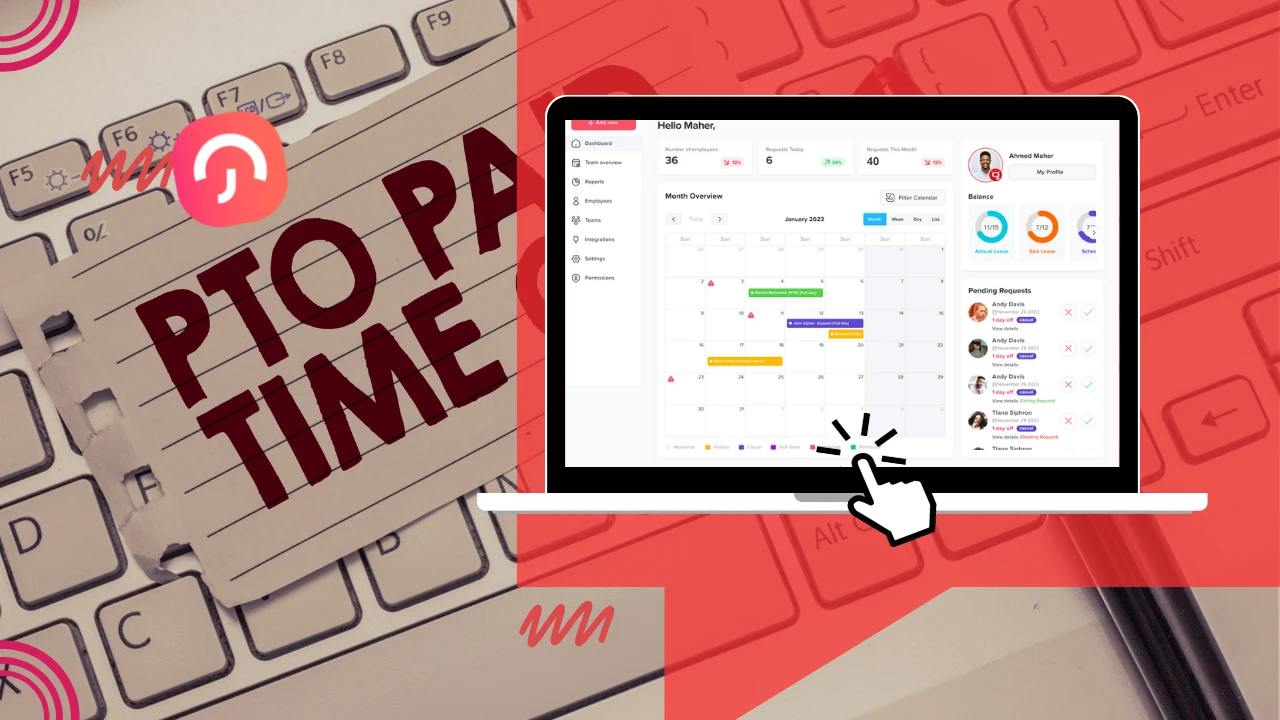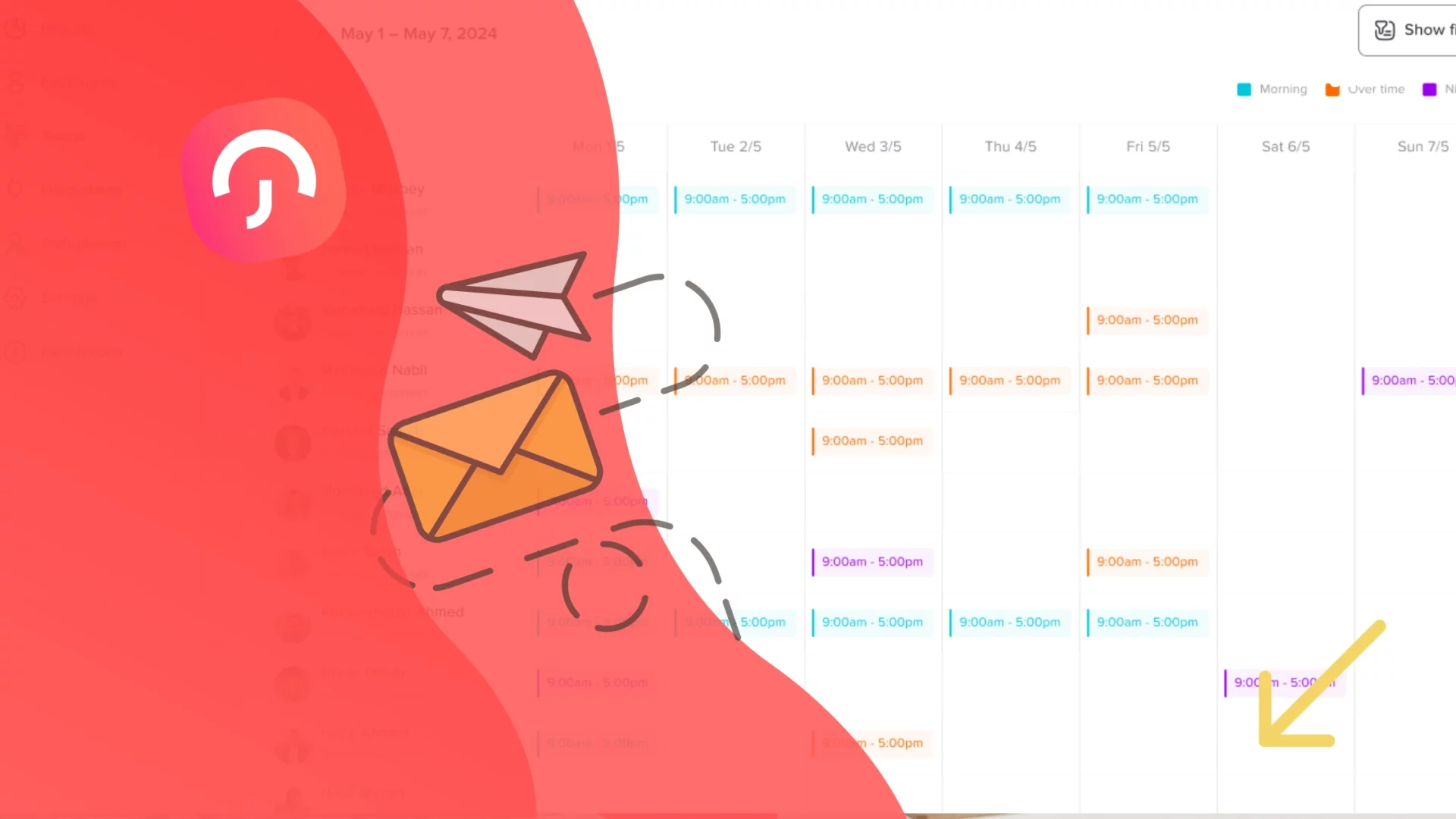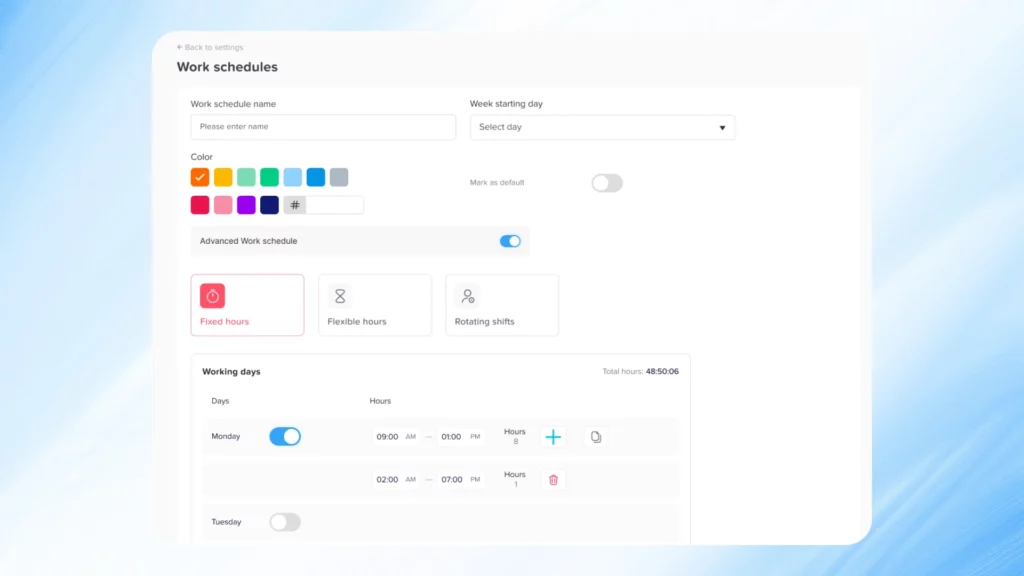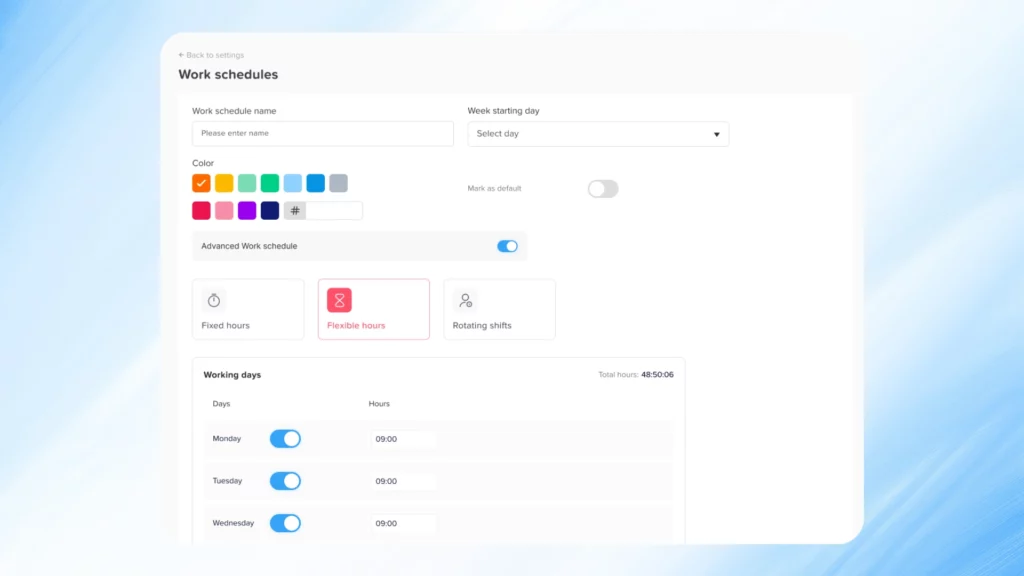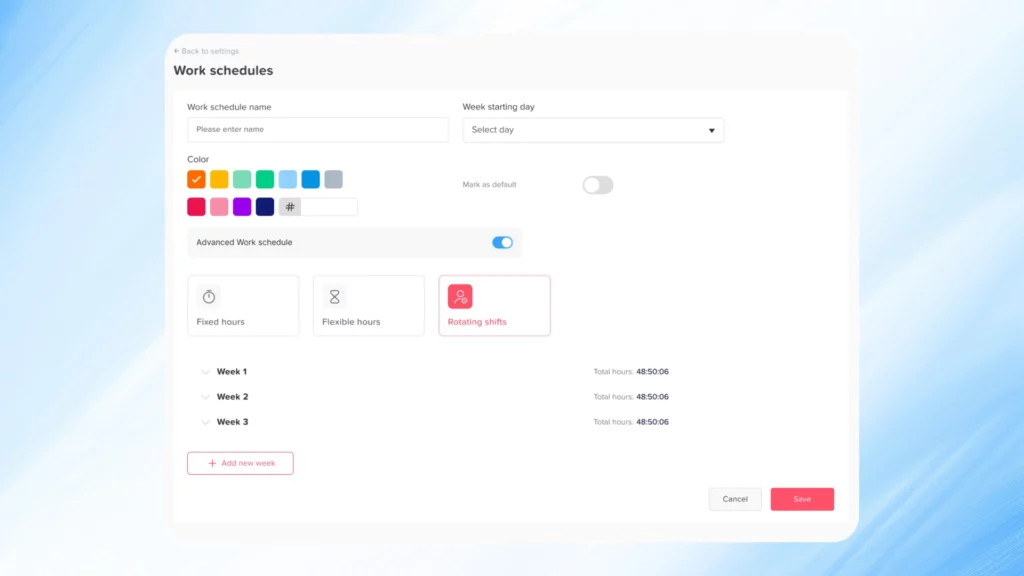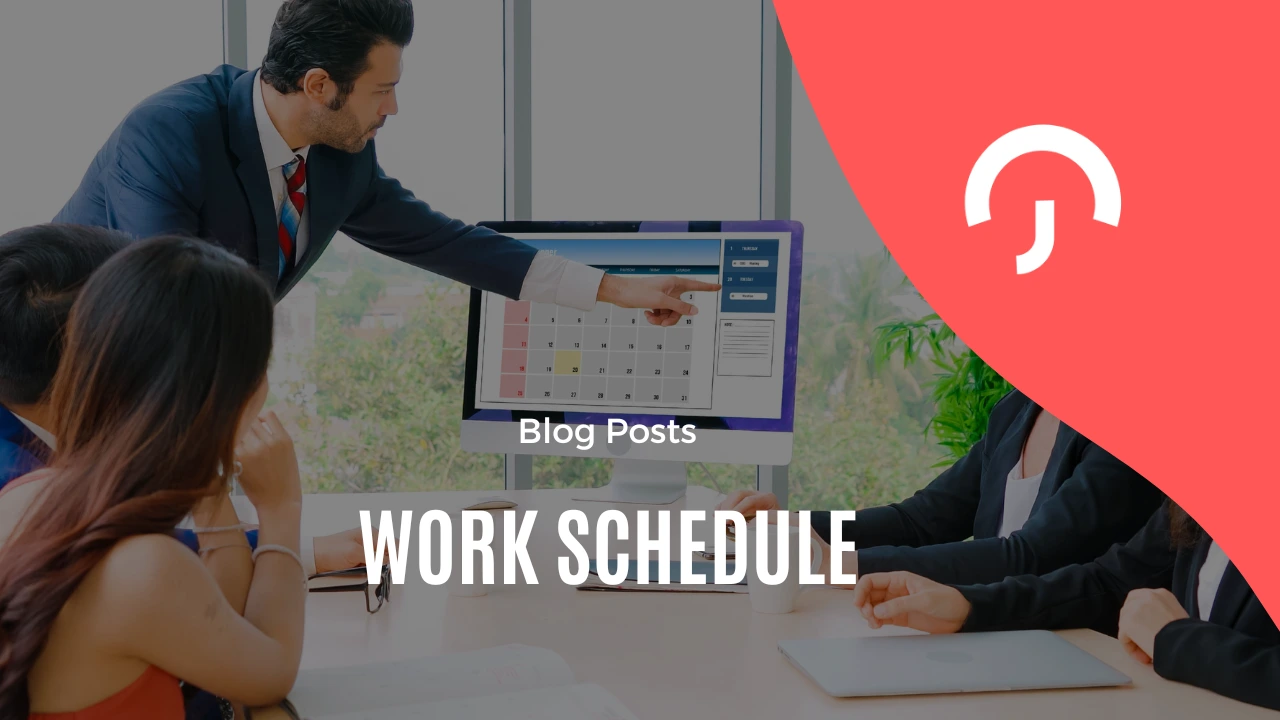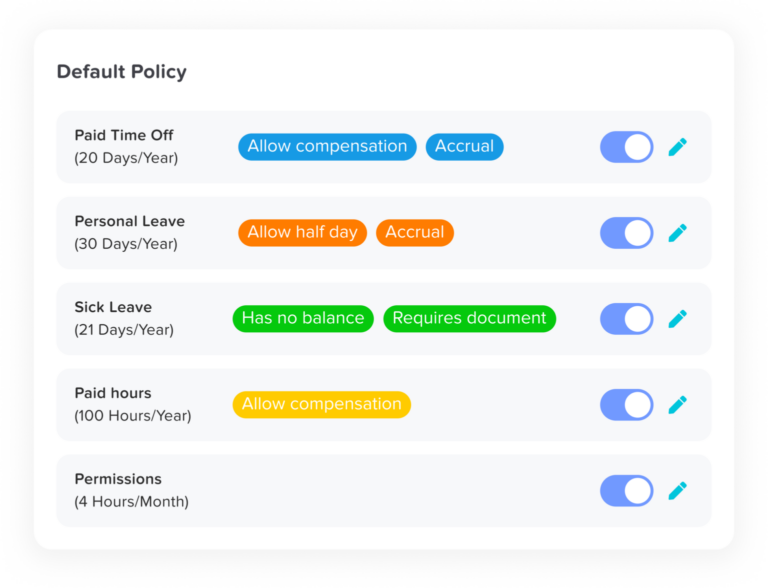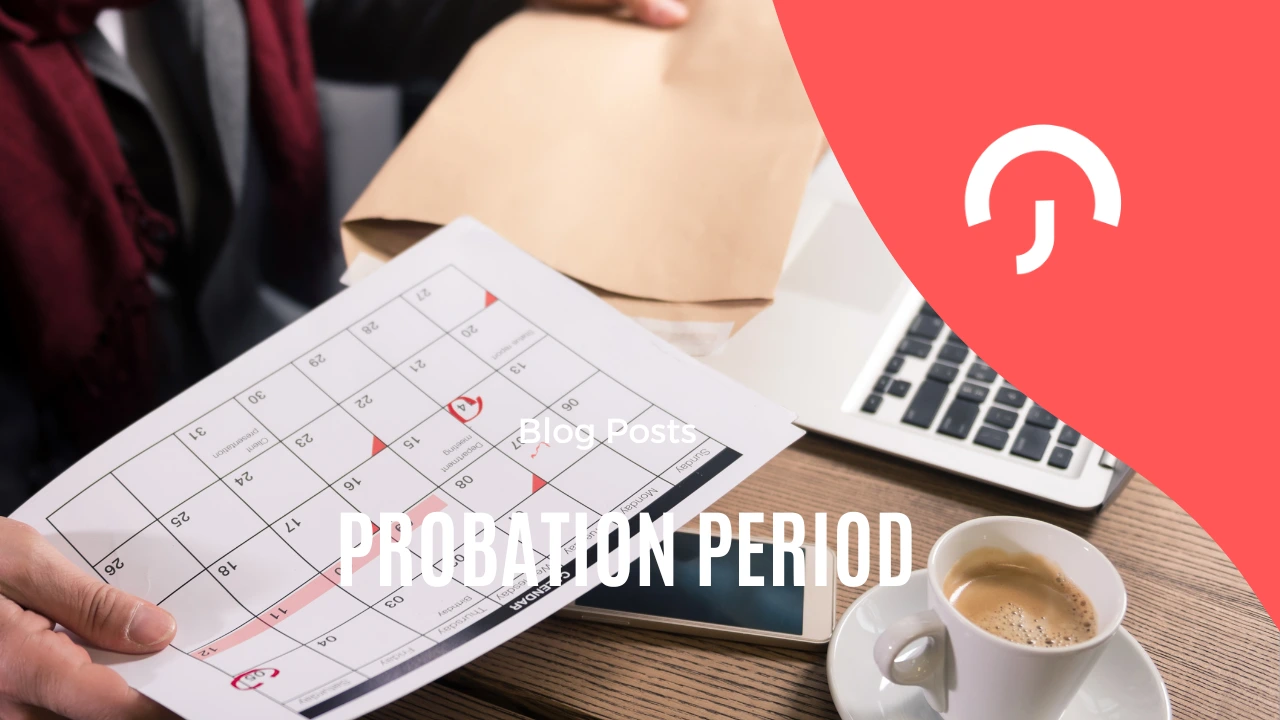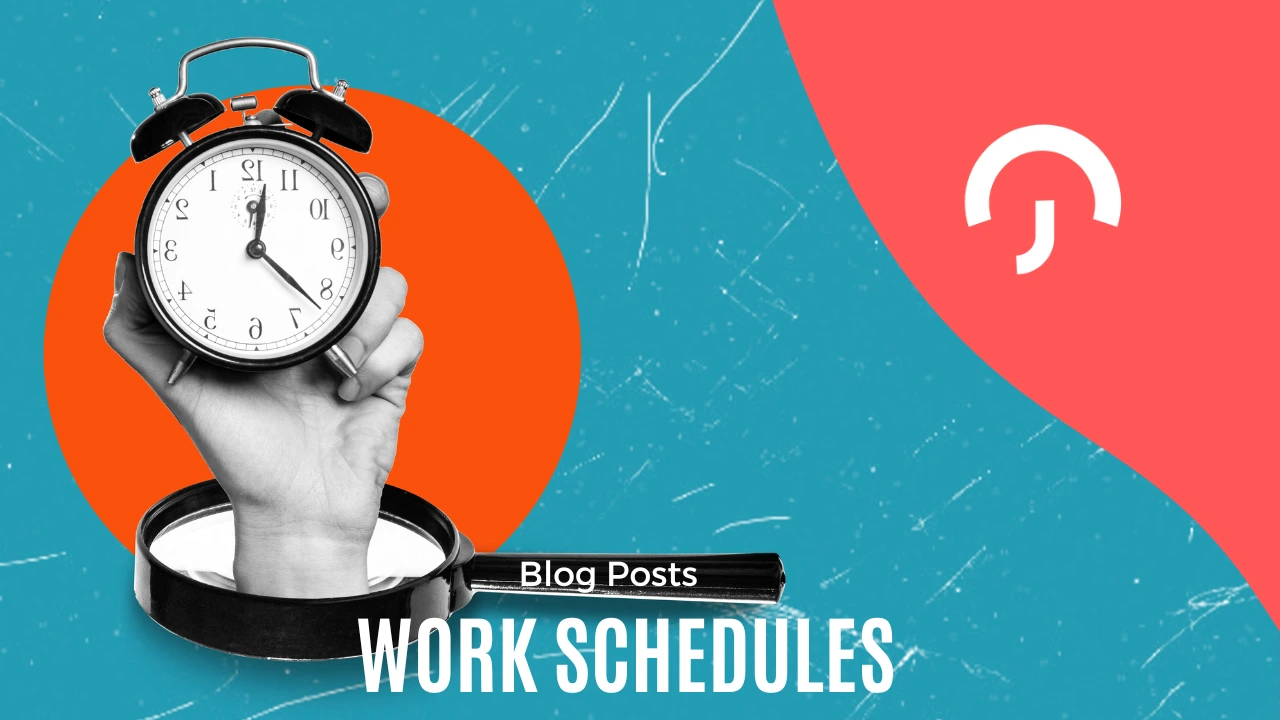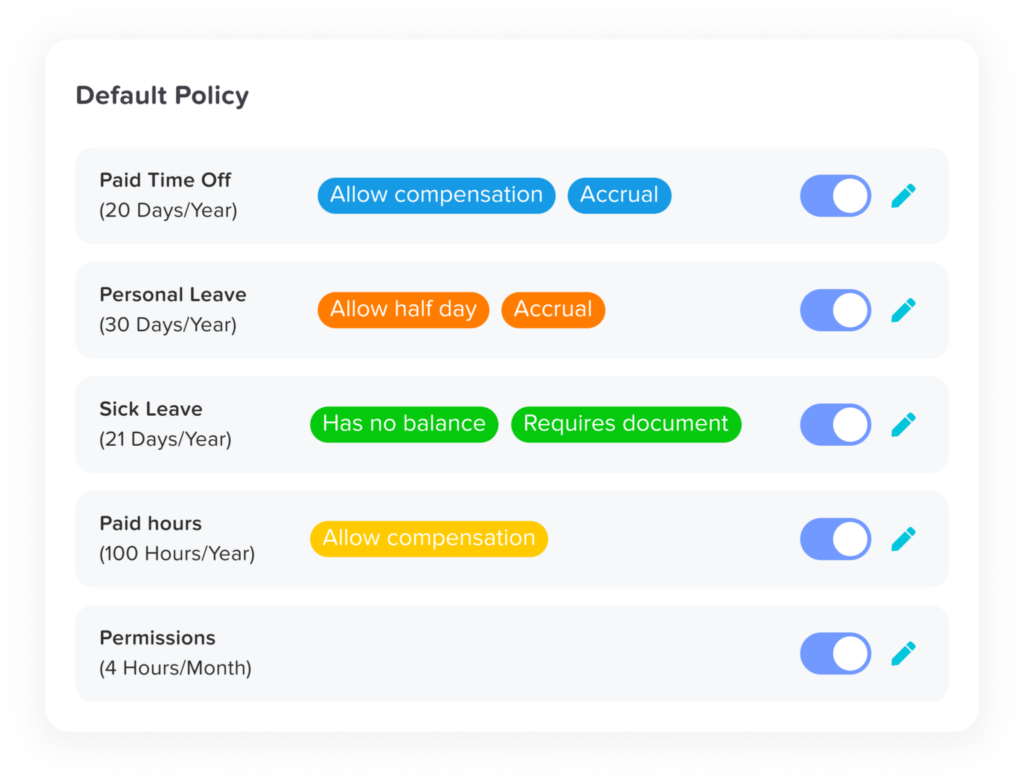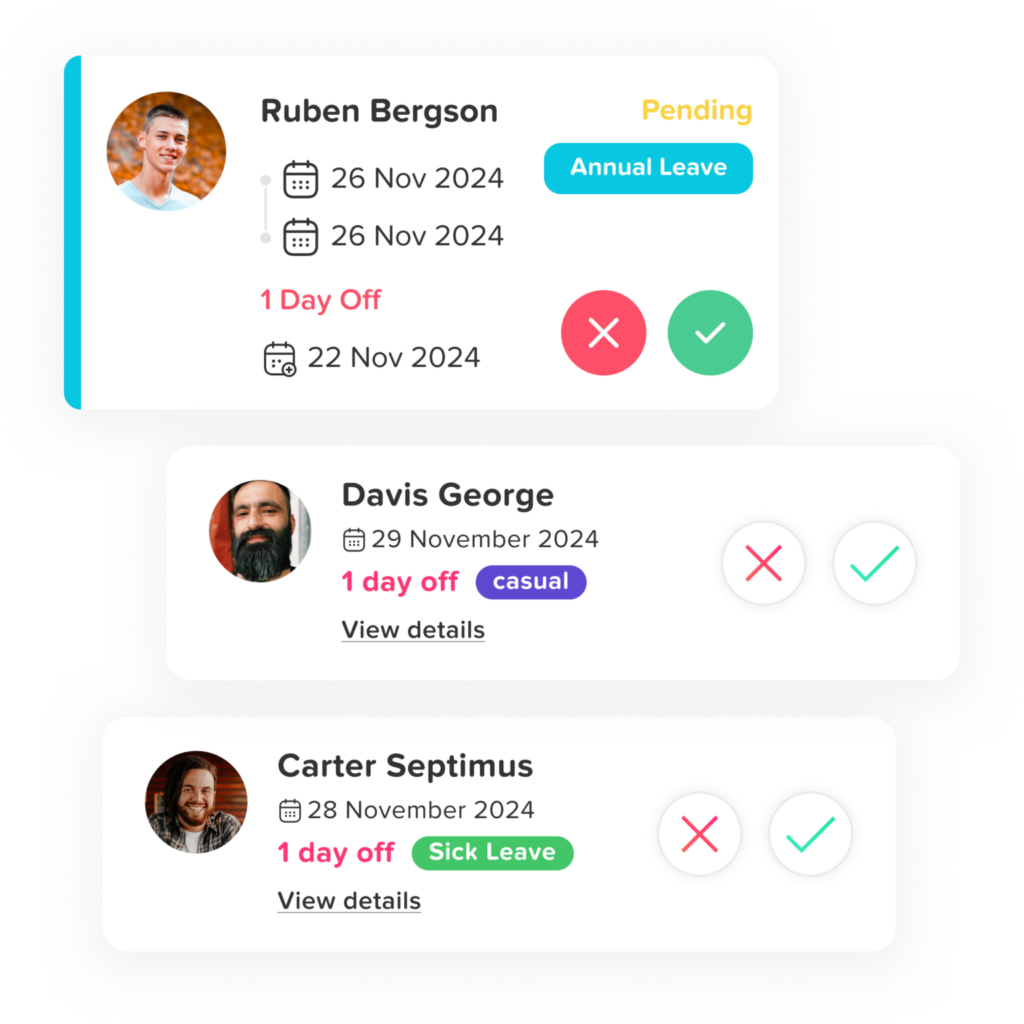Effective Paid Time Off (PTO) tracking is more than just an administrative task, it’s a strategic imperative. Properly managing employee time off helps ensure operational continuity, improves workforce planning, and supports employee satisfaction. When organizations prioritize clear and consistent paid time off tracking, they lay the groundwork for a more transparent, engaged, and productive workplace.
The Strategic Value of PTO Tracking
Tracking Paid Time Off (PTO) isn’t just about logging vacation days, it’s a key component of workforce management that supports productivity, compliance, and employee well-being.
Driving Operational Resilience
When staff submit time-off requests without systematic tracking, leaders lack real-time visibility into future coverage, leading to last-minute scrambles or understaffed shifts. By adopting scheduled leave calendars, departments can preemptively redistribute workloads, schedule temporary support, and sustain service levels even during high-absence periods.
Safeguarding Employee Well-Being
Consistent time-off uptake is essential for mental health, rejuvenation, and avoidance of burnout. Without explicit PTO data, it’s easy for managers to overlook employees silently abstaining from taking vacations, leading to longer-term productivity dips, retention risks, and elevated sick days.
Cultivating Transparency & Trust
Having employees check an up-to-date PTO balance promotes fairness and trust. Users who can both see and understand accruals, carry-over rules, and usage data are far less likely to misunderstand company policies, fostering a culture of open communication around leave.
Ensuring Compliance & Fairness
Many jurisdictions regulate minimum leave time, carry-over statutes, or expiration rules. Internally, companies might implement equitable leave allowances across divisions or geographies. A solid PTO system ensures consistent, policy-aligned leave administration, protecting both the employer and employee.
Data-Driven Resource Planning
Historical PTO trends, such as spikes before holidays, or Q4 dips, can refine hiring plans, contract staffing strategy, and project timing. Managers armed with PTO analytics can forecast staffing gaps months in advance, aligning recruitment, training, and project deadlines accordingly.
Anatomy of an Effective PTO Management System
A dependable PTO platform should excel in several key areas to truly support both employees and employers.
Automated Accrual & Carry-Over Logic
Employees earn leave, monthly, yearly, or based on service tenure. The system should auto-calculate accruals, flag unused balances nearing expiration, and enforce carry-over caps, eliminating manual calculations and calendar errors.
Flexible Multi-Step Approval Workflows
Simple requests might need only a manager’s ok; complex ones (e.g., long leaves, project-impact days) could require sequential sign-offs from HR and Finance, for instance. Automated routing and reminder notifications ensure timely decisions and avoid process bottlenecks.
Unified Shared Calendars + Blackout Periods
Company-wide calendars visualize PTO across teams, preventing overbooking during peak windows. Blackout date functionality prohibits leave submissions during time-sensitive periods like financial closings, product launches, or industry events.
Policy Hierarchy for Locations & Sub-Teams
Global organizations often face multilayered policy needs, e.g., differing public holiday lists, accrual rates by region, and holiday supplants. The system should segment workforces by geography, department, or payroll cycle, and allow tailored PTO setups for each.
Mobile-First Accessibility
Remote work demands mobile-friendly workflows. A modern PTO tool must allow users to request, view, and approve leave via mobile apps—anytime, anywhere, reducing delays from access limitations.
Enterprise-grade Integrations
Seamless syncing with Google/Outlook calendars ensures everyone sees approved time off. Slack or Teams bots can automate reminders and approvals. Payroll, HRIS platforms, and project management apps should all connect, reducing manual data transfers.
Reporting, Analytics & Compliance Dashboard
Detailed reporting, on leave balances, aging accruals, calendar trends, and audit history, helps HR stay ahead of policy enforcement and legal obligations. Visual dashboards let leadership spot department-level trends and preempt coverage issues.
Deep Dive: Day Off App & Its Pioneering Features
Day Off App emerges as a refined paid time off tracking solution, resonating particularly well with SMEs and enterprise-level teams thanks to its robust flexibility, intuitive UX, and policy-rich backbone.
Accrual Logic & Carry-Over Flexibility
Customizable accrual formulas
Monthly/Weekly/biweekly/semimonthly: Set paid time off to accrue incrementally, say, 1.67 days per month or 3.85 hours per week, so balances update in real time, offering staff precise visibility into leave they’ve earned.
Service-based tiers: Reward employee longevity with progressive accrual, like 10 days/year for years 0–2, and 15 days/year for years 3–5. This honors retention and growth.
Pro-rated for part-time: Calculate leave automatically based on hours worked, e.g., a half-time employee accrues 0.5 days when a full-time employee accrues 1, ensuring fairness and administrative ease.
Carry-over rules & balance policies
Annual caps: Enforce limits such as “maximum 5 unused days may roll over”; extra balances may automatically convert to pay or “use it or lose it.”
Time-based expiry: Carry-over amounts may expire after, say, 6 months into the new year, prompting timely leave planning.
Negative balance recovery: If employees take leave beyond what’s accrued, the system tracks their debt and applies future accrual to pay it off, preventing manually corrected time-card adjustments.
Reset mechanisms: At each anniversary or fiscal cycle, the system can wash balances clean or initiate custom “reset plus buffer” schemes.
Multi-Level Approval Flow
Approval routing versatility
Hierarchical chains: A leave request can flow from the direct manager to HR or Finance with automatic escalation if one approver is unavailable.
Parallel approvals: Ideal for contentious leave, e.g., overlapping vacations in small teams, where all relevant stakeholders (e.g., peer leads, cross-functional PMs) need sign-off simultaneously.
Customizable phases: Organizations can define different approval flows depending on employee seniority, leave duration, or team criticality.
Reminders and accountability
Due-date triggers: As the deadline to approve approaches, the system sends reminders via email or push, minimizing bottlenecks and forgotten requests.
Audit trails: Every step is logged, who approved, at what time, with optional comments, providing HR with robust documentation and managers with full oversight.
Shared Calendars & Blackout Date Control
Collaborative team planning
Unified calendar feeds: Allow viewing of all pending and approved leaves by team or across departments. Managers can filter by location, role or project team for targeted resource planning.
Calendar overlays: Integrate with employee calendars so PTO entries appear as “Out of Office,” maintaining transparency and support for ad-hoc scheduling.
Custom color-coding: Visual differentiation, such as “Pending,” “Approved,” and “Blackout,” gives a quick, shared view for everyone.
Blackout enforcement
Request blocking: If a blackout period (e.g., audit week, major demo dates) is defined, the system automatically rejects new requests in that date range, eliminating manual enforcement.
Override alerts: Managers can flag blackout policies if an exceptional exception is needed, preserving control while maintaining policy discipline.
Sub-Team & Location-Specific Policy
Granular segmentation
Departmental divisions: Tailor policies per team, such as “Engineering” vs. “Customer Support,” with differentiated accrual rates or parental leave allowances.
Geographic tailoring: HR can establish locales, for example, UK teams get 28 statutory leave days, while Middle East teams follow different holiday statutes.
Multicompany support: For multi-entity structures, each business unit can maintain its own leave rules while enabling consolidated reporting.
Scoped management
Manager dashboards: Managers can drill into leave behavior within their teams, seeing who’s away soon, who is burning unused time, and upcoming workload impacts, without viewing other groups.
Cross-team insight: Executives can view real-time staffing coverage across the company or specific regions during critical periods.
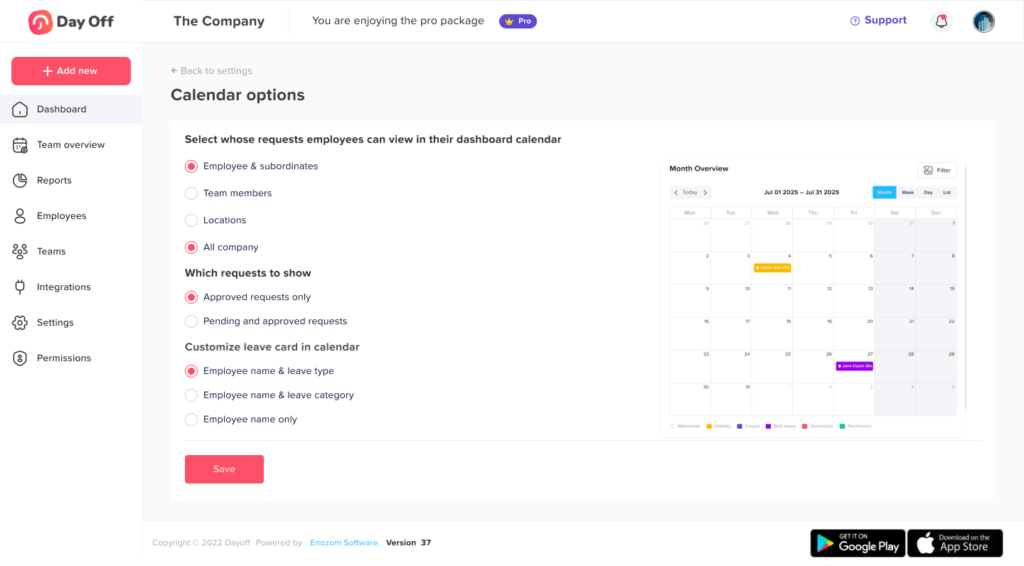
Reporting Module
Day Off App’s reporting capabilities go far beyond spreadsheets, they’re built to inform decisions, support compliance, and enhance team wellness.
Flexible Export & Filter Options
Multiple export formats: Instantly download reports as .xlsx, PDF, or print them directly from the dashboard.
Advanced filtering: Reports can be generated by leave type, period, team, individual employee, or request status, helping HR tailor outputs for payroll, audits, or executive summaries.
Tailored Reporting Views
Balance Report: Offers a snapshot of each employee’s total and used PTO across leave categories, with filters for location and leave policy.
Detailed Requests Report: Lists every leave request, approved, pending, or rejected, along with dates, durations, and leave reasons.
Totals Report: Summarizes the total leave (days or hours) taken by the employee over a selected interval.
Accrual Report: Tracks earned leave over time per user, including accrual dates and amounts, critical for complex PTO policies.
Carryover Report: Displays what unused leave was rolled over, any expiry rules applied, and remaining balances.
Insightful Analytics & Risk Management
Trend analysis: View leave usage by month or quarter, identify patterns like absentee spikes or underutilization.
Burnout or hoarding flags: Detect staff who haven’t taken time off or have excessive leave balances, prompting discussions before stress peaks.
Audit-ready logs: Every action, request, modification, approval, cancellation, is chronologically recorded, helping HR maintain a complete compliance history.
Native Mobile Support
Day Off’s mobile apps deliver full parity with the web platform, empowering users to manage PTO seamlessly, even when away from their desks.
Request & balance management on-the-go
Employees can submit leave requests, attach notes or files (e.g., doctor’s notes), and instantly view current PTO balances, all within the mobile app.
Managers receive push notifications and can approve or reject requests with just a tap, cutting down approval delays and eliminating email chains.
Designed for speed and clarity
With a polished mobile-first interface, users benefit from quick swipe-tap approval workflows, clear dashboards for balance visibility, and calendar sync features that streamline daily usage
Integrations (Calendars & Chat)
Day Off integrates smoothly with popular productivity tools, embedding paid time off tracking into existing team workflows.
Calendar sync to Google & Outlook
Approved leave automatically appears in Google or Outlook calendars as “busy,” ensuring whole-team visibility and eliminating scheduling conflicts.
Admins can exclude certain leave types (e.g., volunteer or unpaid days) from syncing, keeping calendars clean and relevant.
Slack & Microsoft Teams bots
In-chat commands like Day Off request 2025-07-25 to 2025-07-27 allow users to request leave without switching apps.
Managers receive immediate notifications in Slack or Teams with actionable buttons (“Approve/Deny”) embedded within the message.
Robust API connections
For advanced use cases, Day Off offers API access for syncing leave data with HRIS, payroll, or time-tracking systems, promoting automation and consolidated analytics
Pricing
PTO Best Practices for Organizations
Based on user experiences and industry-standard workflows:
Codify Policies Clearly
Define PTO types (e.g., annual, sick, sabbatical), accrual rules, carry-over caps, and blackout dates before system setup. Clear definitions ensure that the platform’s behavior aligns with real-world expectations.
Segment by Work Structures
Distinguish rules by region or team, e.g., UK staff receive statutory holidays plus local closures, while field teams accrue leave pro-rated for irregular hours. Note that some reviewers asked for easier multi-country calendar setups, emphasizing the need for careful configuration during the rollout of Vacation Tracker.
Empower Approvers
Define alternate approvers or configure escalation rules if a manager is unavailable. Enabling notifications after 72 hours helps avoid stagnating leave requests and keeps processes moving.
Embed Integrations
Sync approved PTO with Google/Outlook calendars and Slack (or Teams) to keep everyone informed. For example, the Slack integration sends daily digests (“Who is off today?”), which supports team transparency and avoids surprises.
Monitor Trends Consistently
Track leave usage data to spot unusual patterns like year-end “leave-hoarding” or low PTO uptake in certain teams, metrics that may signal overwork or disengagement.
Empower Education
Launch with interactive training sessions, FAQs, or short video walkthroughs. In one case, a small organization saw immediate adoption thanks to straightforward onboarding and tutorial support, lessening the admin burden.
Iterate Regularly
Plan quarterly reviews of PTO policies, blackout date updates, and integrate user feedback. Users have reported missing features, like hourly request flexibility, so maintaining a feedback loop ensures continuous improvement.
FAQs
Can employees request multiple leave types in a single request (e.g., sick + unpaid)?
Currently, Day Off requires leave to be categorized by a single type per request. However, users can submit multiple consecutive requests under different types (e.g., 2 days of sick leave followed by 1 day unpaid), and managers will receive and process each individually.
How does Day Off handle half-day or hourly leave requests?
Yes, Day Off supports half-day requests. Hourly requests are available under specific configurations, ideal for part-time teams or those needing micro-leave tracking (e.g., 2-hour early departures). Admins can enable or restrict hourly options depending on policy.
Can public holidays be automatically imported for different countries?
Yes. Day Off allows you to import or customize public holiday calendars by country or region. Admins can apply different calendars to different teams or locations, useful for multinational setups.
What happens when two team members request overlapping dates during a critical period?
If blackout dates are defined, the request will be auto-blocked. Otherwise, overlapping leave triggers visibility alerts to approvers, who can decline, approve selectively, or suggest rescheduling based on team capacity.
Can leave types have unique rules (e.g., maternity requiring documents, sick leave needing notes)?
Yes. Each leave type can be customized to include required documentation, approval levels, and visibility settings. For instance, sick leave might require a doctor’s note, while casual leave may only need a manager’s sign-off.
Is SSO (Single Sign-On) available?
Yes, SSO is supported in the Enterprise plan. It integrates with common identity providers (e.g., Azure AD, Google Workspace, Okta) for secure, centralized access control.
What kind of support is available?
Day Off offers live chat, email support, and an in-depth Help Center with guides and tutorials. Pro and Enterprise users receive priority responses, and onboarding assistance is included at the Enterprise level.
How secure is my company’s data?
Day Off complies with SOC 2 Type II and ISO‑27001 standards. It uses TLS for data in transit and AES‑256 encryption at rest. Daily backups and role-based access further enhance data protection.
How long does it take to set up Day Off for a new company?
For small teams, a full setup, including policy definition, user import, and holiday configuration, can be done in under an hour. Larger enterprises with custom workflows and integrations typically complete rollout in 1–2 weeks.
Conclusion
Effective Paid time off tracking isn’t just about logging absences, it’s a strategic advantage that improves team coordination, ensures compliance, reduces burnout, and supports a transparent workplace culture. With tools like Day Off Vaacation Tracker, organizations gain a flexible, mobile-first, and highly customizable platform for managing paid time off tracking. From automated accruals and blackout enforcement to mobile approvals and real-time reporting, Day Off delivers the functionality and clarity modern teams need. Whether you’re running a small startup or a distributed enterprise, investing in structured paid time off tracking ensures better planning, happier employees, and more resilient operations.
